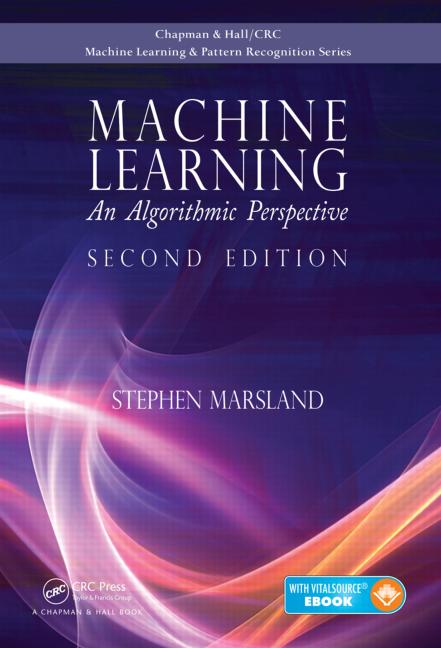Stephen Marsland - Machine Learning Book 2nd Ed
Introduction
I purchased and read Stephen Marsland’s machine learning textbook “Machine Learning: An Algorithmic Perspective, Second Edition” early this year. Today I am going to give an overall review and rate on it here. You can purchase the book from Amazon.
The reason for purchasing this book is that I need a comprehensive machine learning textbook, covering most of the machine learning topics, for reference. The mathematics behind these machine learning topics are preferred but not required. I am a computer scientist but not a statistician. So this book titled “Machine Learning: An Algorithmic Perspective, Second Edition”, plus its good-looking hard-cover quickly attracted my attention. This book covers the three areas of machine learning topics, namely supervised learning, unsupervised learning, and reinforcement learning, which is comprehensive enough to be a machine learning textbook. It contains some reasonable amount of math, makes it less daunting compared to books that look more sophisticated such as Jerome Friedman et al.’s “The Elements of Statistical Learning: Data Mining, Inference, and Prediction, Second Edition”.
After reading the whole book, I would rate this book 3/5, which means that It is merely acceptable but not that great.

Strengths
The topics are comprehensive. Almost all of the machine learning techniques used in supervised learning, unsupervised learning, and reinforcement learning were touched to a different extent in this book, make it at least a good machine learning bibliography. Some of the topics, which you might have not seen in MOOC courses, are important to machine learning studies.
Weakness
Too much mathematics error and symbol inconsistency. I am not sure if the author has derived all the mathematics equations behind different machine learning techniques in person. But I found there are math errors in almost every section in every chapter of the book. Some of the errors are due to symbol mislabeling. A few of the errors are derivation errors. I could find out those errors because those math does not make sense to me when I was reading. So I looked for other math materials from some other resources, compared them to the math content in the book, and confirm the errors. This is quite disappointing because math is important to machine learning. Although machine learning learners, such as computer scientists, might just have to understand some basic math principles behind, this book certainly does not meet this basic criterion. Especially for machine learning beginners, such as students, this book does not serve the purpose. By the way, thanks to this weakness of the book, I understand the mathematical principles behind machine learning a lot by doing math in person and search for the right math solutions.
Conclusions
I don’t recommend this book as a machine learning textbook, especially for beginners.
Stephen Marsland - Machine Learning Book 2nd Ed
https://leimao.github.io/reading/Stephen-Marsland-Book-Machine-Learning-2nd/